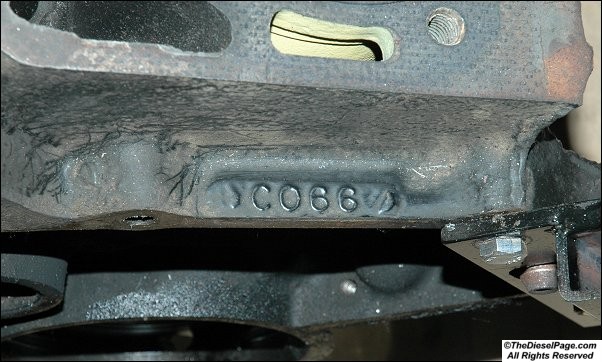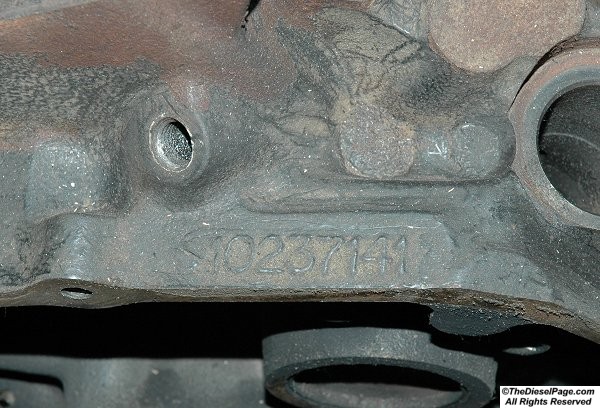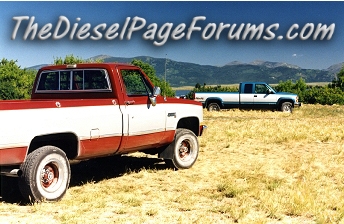What month, day and year was this 6.5L block cast?
To answer the question... All of the 6.2L/6.5L cylinder block casting dates up through November 2001 used 4 digits. The reality is though, that GM stopped casting these cylinder blocks well before the November 2001 hand-off to AM General.
The beginning letter (A, B, C, etc) indicates the month; A=January, B=February, etc.; the "C" in this case tells us it was March. GM didn't use some of the letters of the alphabet in any casting codes because of a possible confusion with a number, such as the letter I or O. The next two digits in the above block code shown indicate the day of the month that this block was cast; in this case the "06" indicates the 6th day of the month. The fourth digit indicates the year in which the casting was made; in this case 199"6", because we know it's a pre-oil spray 6.5L block. So this 6.5L block was cast on March 6, 1996.
With just one digit indicating casting date year, you have put the block into context with what we know the 6.2L/6.5L production to get the right year.
Jim











 Reply With Quote
Reply With Quote





 This was due (we were told) to a collapsed air filter, that allowed the engine to ingest dirt for quite some time. Like others I've seen with washed-out cyls, #6 & #8 were the worst, though all eight holes were trashed.
This was due (we were told) to a collapsed air filter, that allowed the engine to ingest dirt for quite some time. Like others I've seen with washed-out cyls, #6 & #8 were the worst, though all eight holes were trashed. 

 please
please
